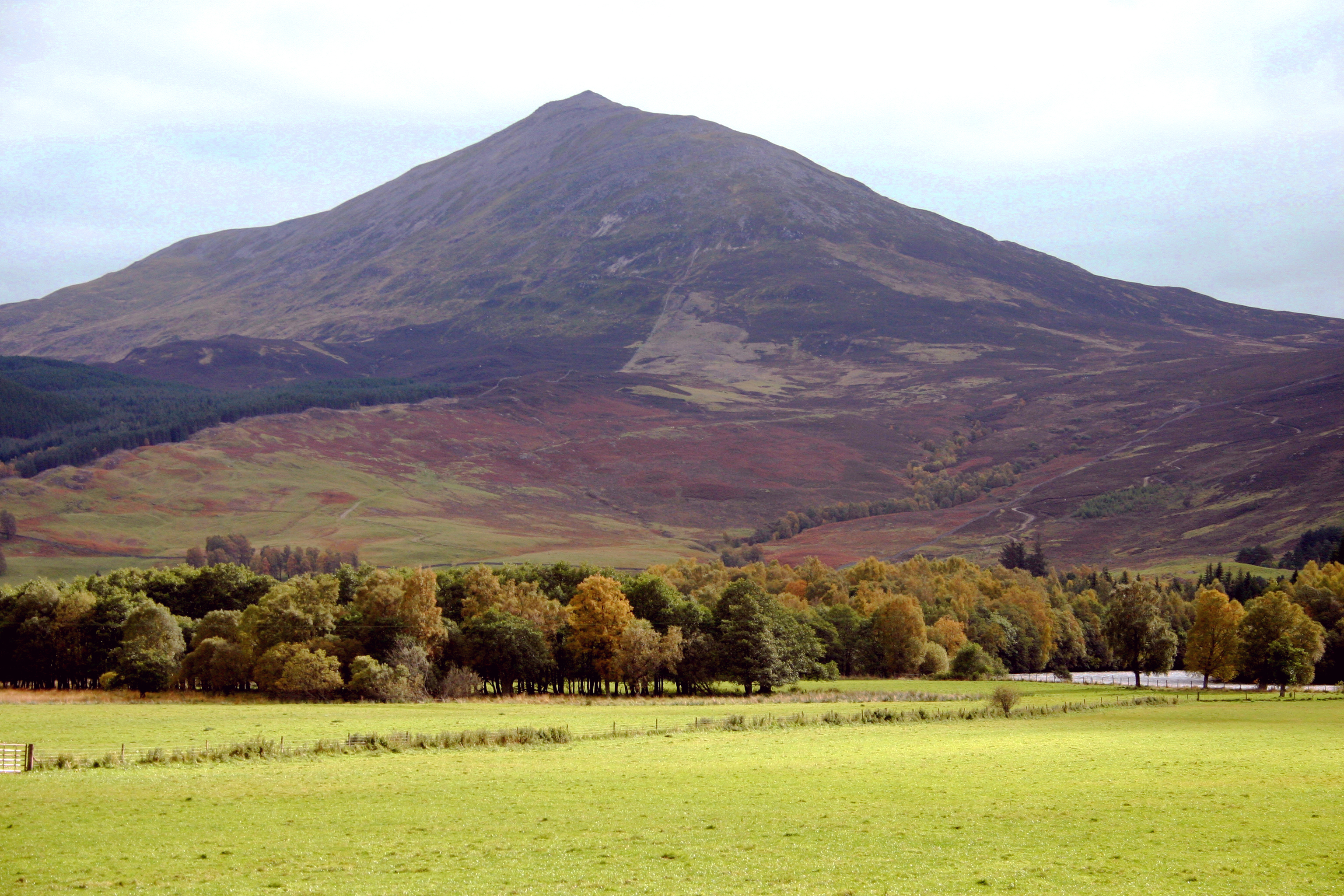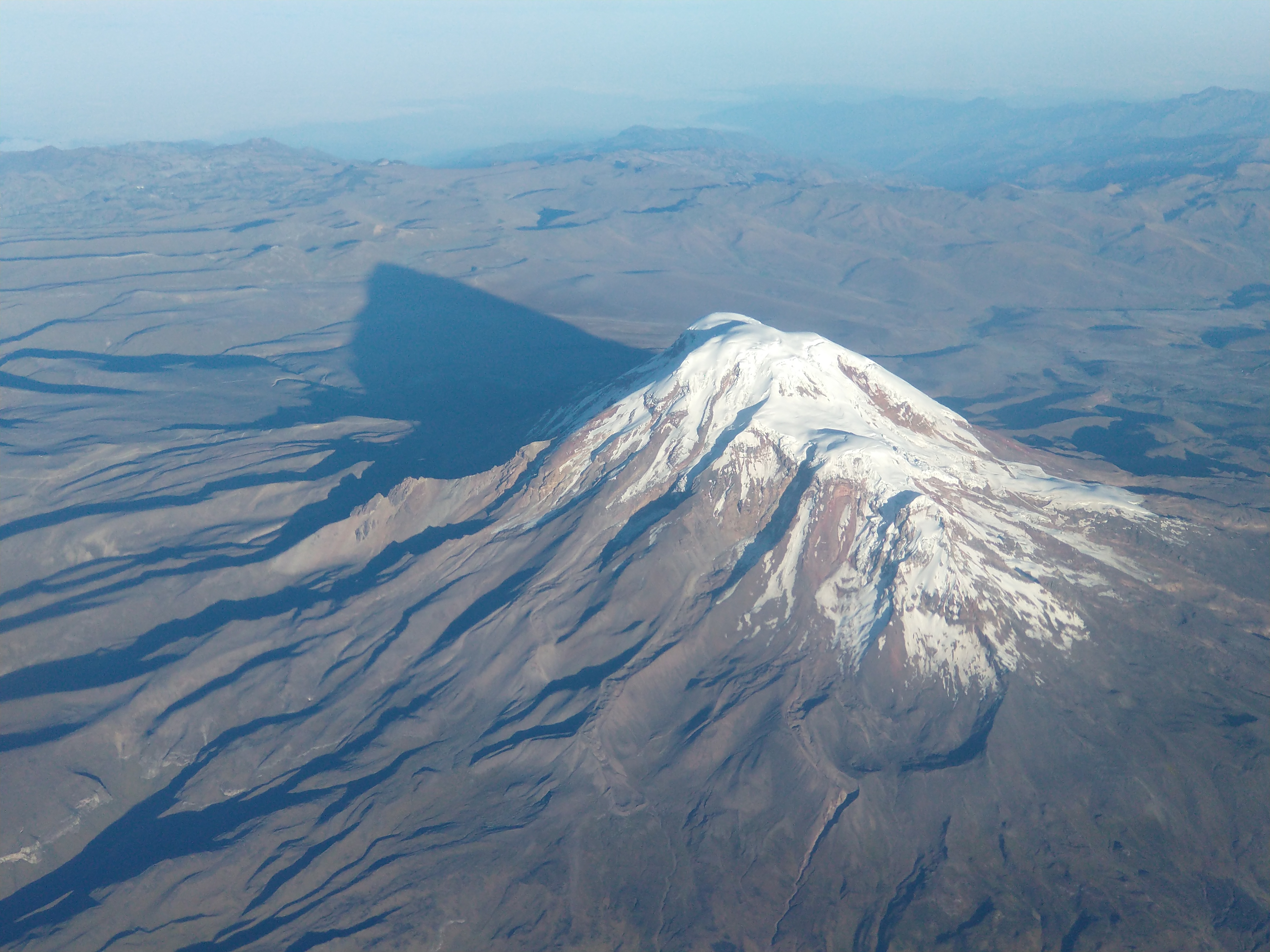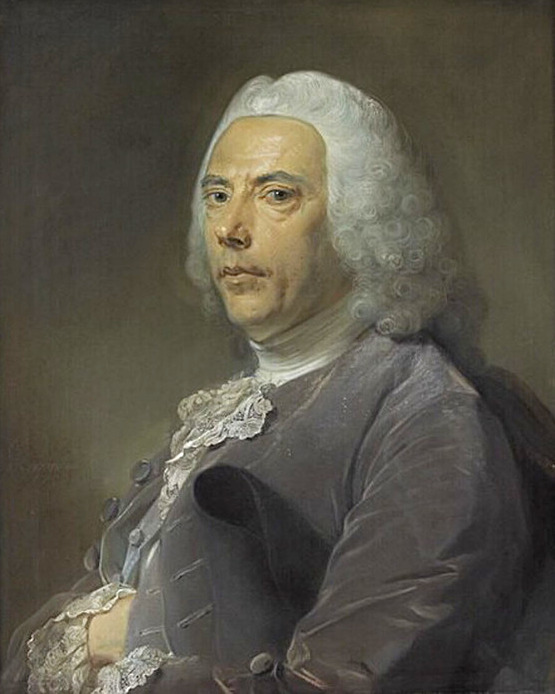|
Schiehallion Experiment
The Schiehallion experiment was an 18th-century experiment to determine the Arithmetic mean, mean density of the Earth. Funded by a grant from the Royal Society, it was conducted in the summer of 1774 around the Scottish Mountains and hills of Scotland, mountain of Schiehallion, Perthshire. The experiment involved measuring the tiny deflection of the vertical due to the gravity, gravitational attraction of a nearby mountain. Schiehallion was considered the ideal location after a search for candidate mountains, thanks to its isolation and almost symmetrical shape. The experiment had previously been considered, but rejected, by Isaac Newton as a practical demonstration of his Newton's law of universal gravitation, theory of gravitation; however, a team of scientists, notably Nevil Maskelyne, the Astronomer Royal, was convinced that the effect would be detectable and undertook to conduct the experiment. The deflection angle depended on the relative densities and volumes of the Eart ... [...More Info...] [...Related Items...] OR: [Wikipedia] [Google] [Baidu] |
Experiment
An experiment is a procedure carried out to support or refute a hypothesis, or determine the efficacy or likelihood of something previously untried. Experiments provide insight into cause-and-effect by demonstrating what outcome occurs when a particular factor is manipulated. Experiments vary greatly in goal and scale but always rely on repeatable procedure and logical analysis of the results. There also exist natural experimental studies. A child may carry out basic experiments to understand how things fall to the ground, while teams of scientists may take years of systematic investigation to advance their understanding of a phenomenon. Experiments and other types of hands-on activities are very important to student learning in the science classroom. Experiments can raise test scores and help a student become more engaged and interested in the material they are learning, especially when used over time. Experiments can vary from personal and informal natural comparisons ... [...More Info...] [...Related Items...] OR: [Wikipedia] [Google] [Baidu] |
Plumb-bob
A plumb bob, plumb bob level, or plummet, is a weight, usually with a pointed tip on the bottom, suspended from a string and used as a vertical direction as a reference line, or plumb-line. It is a precursor to the spirit level and used to establish a vertical datum reference, datum. It is typically made of stone, wood, or lead, but can also be made of other metals. If it is used for decoration, it may be made of bone or ivory. The measuring instrument, instrument has been used since at least the time of ancient EgyptDenys A. Stocks. Experiments in Egyptian archaeology: stoneworking technology in Ancient Egypt'. Routledge; 2003. . p. 180. to ensure that constructions are "wikt:plumb, plumb", or vertical. It is also used in surveying, to establish the nadir (opposite of zenith) with respect to Gravity of Earth, gravity of a point in space. It is used with a variety of instruments (including Level (instrument), levels, theodolites, and tape measure, steel tapes) to set the in ... [...More Info...] [...Related Items...] OR: [Wikipedia] [Google] [Baidu] |
Chimborazo (volcano)
Chimborazo () is a stratovolcano situated in Ecuador in the Cordillera Occidental range of the Andes. Its last known eruption is believed to have occurred around AD 550. Although not the tallest mountain in the Andes or on Earth relative to sea level, its summit is the farthest point on Earth's surface from the Earth's center due to its location along the planet's equatorial bulge. Chimborazo's height from sea level is 6,263 m (20,548 ft), well below that of Mount Everest at 8,849 m (29,031 ft). Chimborazo is the highest mountain in Ecuador and the 39th-highest peak in the entire Andes. It is a popular destination for mountaineering due to its challenging climbing routes, which involve traversing snow, ice, and rocky terrain. Etymology Several theories regarding the origin of the name Chimborazo exist. In many dialects of Quechua, "chimba" means "on the other side" as in "on the other side of the river" or "on the opposite bank". Other dialects pronounce this word ... [...More Info...] [...Related Items...] OR: [Wikipedia] [Google] [Baidu] |
Charles Marie De La Condamine
Charles Marie de La Condamine (; 28 January 1701 – 4 February 1774) was a French explorer, geographer, and mathematician. He spent ten years in territory which is now Ecuador, measuring the length of a degree of latitude at the equator and preparing the first map of the Amazon region based on astro-geodetic observations. Furthermore he was a contributor to the ''Encyclopédie''. Biography Charles Marie de La Condamine was born in Paris as a son of well-to-do parents, Charles de La Condamine and Louise Marguerite Chourses. He studied at the Collège Louis-le-Grand in Paris, where he was trained in humanities as well as in mathematics. After finishing his studies, he enlisted in the army and fought in the war against Spain (1719). After returning from the war, he became acquainted with scientific circles in Paris. On 12 December 1730 he became a member of the Académie des Sciences and was appointed Assistant Chemist at the Academy. In 1729 La Condamine and his friend Volta ... [...More Info...] [...Related Items...] OR: [Wikipedia] [Google] [Baidu] |
Pierre Bouguer
Pierre Bouguer () (16 February 1698, Le Croisic – 15 August 1758, Paris) was a French mathematician, geophysicist, geodesist, and astronomer. He is also known as "the father of naval architecture". Career Bouguer's father, Jean Bouguer, one of the best hydrographers of his time, was Regius Professor of hydrography at Le Croisic in lower Brittany, and author of a treatise on navigation. He taught his sons Pierre and Jan at their home, where he also taught private students. In 1714, at the age of 16, Pierre was appointed to succeed his deceased father as professor of hydrography. In 1727 he gained the prize given by the French Academy of Sciences for his paper ''On the masting of ships'', beating Leonhard Euler; and two other prizes, one for his dissertation ''On the best method of observing the altitude of stars at sea'', the other for his paper ''On the best method of observing the variation of the compass at sea''. These were published in the Prix de l'Académie des Sci ... [...More Info...] [...Related Items...] OR: [Wikipedia] [Google] [Baidu] |
Chimborazo From Southwest
Chimborazo () is a stratovolcano situated in Ecuador in the Cordillera Occidental range of the Andes. Its last known eruption is believed to have occurred around AD 550. Although not the tallest mountain in the Andes or on Earth relative to sea level, its summit is the farthest point on Earth's surface from the Earth's center due to its location along the planet's equatorial bulge. Chimborazo's height from sea level is 6,263 m (20,548 ft), well below that of Mount Everest at 8,849 m (29,031 ft). Chimborazo is the highest mountain in Ecuador and the 39th-highest peak in the entire Andes. It is a popular destination for mountaineering due to its challenging climbing routes, which involve traversing snow, ice, and rocky terrain. Etymology Several theories regarding the origin of the name Chimborazo exist. In many dialects of Quechua, "chimba" means "on the other side" as in "on the other side of the river" or "on the opposite bank". Other dialects pronounce this word "ch ... [...More Info...] [...Related Items...] OR: [Wikipedia] [Google] [Baidu] |
Gravitational Constant
The gravitational constant is an empirical physical constant involved in the calculation of gravitational effects in Sir Isaac Newton's law of universal gravitation and in Albert Einstein's general relativity, theory of general relativity. It is also known as the universal gravitational constant, the Newtonian constant of gravitation, or the Cavendish gravitational constant, denoted by the capital letter . In Newton's law, it is the proportionality constant connecting the gravitational force between two bodies with the product of their masses and the inverse-square law, inverse square of their distance. In the Einstein field equations, it quantifies the relation between the geometry of spacetime and the energy–momentum tensor (also referred to as the stress–energy tensor). The measured value of the constant is known with some certainty to four significant digits. In SI units, its value is approximately The modern notation of Newton's law involving was introduced i ... [...More Info...] [...Related Items...] OR: [Wikipedia] [Google] [Baidu] |
Natural Satellite
A natural satellite is, in the most common usage, an astronomical body that orbits a planet, dwarf planet, or small Solar System body (or sometimes another natural satellite). Natural satellites are colloquially referred to as moons, a derivation from the Moon of Earth. In the Solar System, there are six planetary satellite systems containing 418 known natural satellites altogether. Seven objects commonly considered dwarf planets by astronomers are also known to have natural satellites: , Pluto, Haumea, , Makemake, , and Eris. As of January 2022, there are 447 other minor planets known to have natural satellites. A planet usually has at least around 10,000 times the mass of any natural satellites that orbit it, with a correspondingly much larger diameter. The Earth–Moon system is a unique exception in the Solar System; at 3,474 kilometres (2,158 miles) across, the Moon is 0.273 times the diameter of Earth and about of its mass. The next largest ratios are the N ... [...More Info...] [...Related Items...] OR: [Wikipedia] [Google] [Baidu] |
Planet
A planet is a large, Hydrostatic equilibrium, rounded Astronomical object, astronomical body that is generally required to be in orbit around a star, stellar remnant, or brown dwarf, and is not one itself. The Solar System has eight planets by the most restrictive definition of the term: the terrestrial planets Mercury (planet), Mercury, Venus, Earth, and Mars, and the giant planets Jupiter, Saturn, Uranus, and Neptune. The best available theory of planet formation is the nebular hypothesis, which posits that an interstellar cloud collapses out of a nebula to create a young protostar orbited by a protoplanetary disk. Planets grow in this disk by the gradual accumulation of material driven by gravity, a process called accretion (astrophysics), accretion. The word ''planet'' comes from the Greek () . In Classical antiquity, antiquity, this word referred to the Sun, Moon, and five points of light visible to the naked eye that moved across the background of the stars—namely, Me ... [...More Info...] [...Related Items...] OR: [Wikipedia] [Google] [Baidu] |
Minute Of Arc
A minute of arc, arcminute (abbreviated as arcmin), arc minute, or minute arc, denoted by the symbol , is a unit of angular measurement equal to of a degree. Since one degree is of a turn, or complete rotation, one arcminute is of a turn. The nautical mile (nmi) was originally defined as the arc length of a minute of latitude on a spherical Earth, so the actual Earth's circumference is very near . A minute of arc is of a radian. A second of arc, arcsecond (abbreviated as arcsec), or arc second, denoted by the symbol , is a unit of angular measurement equal to of a minute of arc, of a degree, of a turn, and (about ) of a radian. These units originated in Babylonian astronomy as sexagesimal (base 60) subdivisions of the degree; they are used in fields that involve very small angles, such as astronomy, optometry, ophthalmology, optics, navigation, land surveying, and marksmanship. To express even smaller angles, standard SI prefixes can be employed; the milliar ... [...More Info...] [...Related Items...] OR: [Wikipedia] [Google] [Baidu] |
Philosophiæ Naturalis Principia Mathematica
(English: ''The Mathematical Principles of Natural Philosophy''), often referred to as simply the (), is a book by Isaac Newton that expounds Newton's laws of motion and his law of universal gravitation. The ''Principia'' is written in Latin and comprises three volumes, and was authorized, imprimatur, by Samuel Pepys, then-President of the Royal Society on 5 July 1686 and first published in 1687. The is considered one of the most important works in the history of science. The French mathematical physicist Alexis Clairaut assessed it in 1747: "The famous book of ''Mathematical Principles of Natural Philosophy'' marked the epoch of a great revolution in physics. The method followed by its illustrious author Sir Newton ... spread the light of mathematics on a science which up to then had remained in the darkness of conjectures and hypotheses." The French scientist Joseph-Louis Lagrange described it as "the greatest production of the human mind". French polymath Pierre-Simon ... [...More Info...] [...Related Items...] OR: [Wikipedia] [Google] [Baidu] |
Earth Mass
An Earth mass (denoted as ''M''🜨, ''M''♁ or ''M''E, where 🜨 and ♁ are the astronomical symbols for Earth), is a unit of mass equal to the mass of the planet Earth. The current best estimate for the mass of Earth is , with a relative uncertainty of 10−4.The cited value is the recommended value published by the International Astronomical Union in 2009 (se2016 "Selected Astronomical Constants" in ). It is equivalent to an average density of . Using the nearest metric prefix, the Earth mass is approximately six ronnagrams, or 6.0 Rg. The Earth mass is a standard unit of mass in astronomy that is used to indicate the masses of other planets, including rocky terrestrial planets and exoplanets. One Solar mass is close to Earth masses. The Earth mass excludes the mass of the Moon. The mass of the Moon is about 1.2% of that of the Earth, so that the mass of the Earth–Moon system is close to . Most of the mass is accounted for by iron and oxygen (c. 32% each), m ... [...More Info...] [...Related Items...] OR: [Wikipedia] [Google] [Baidu] |









